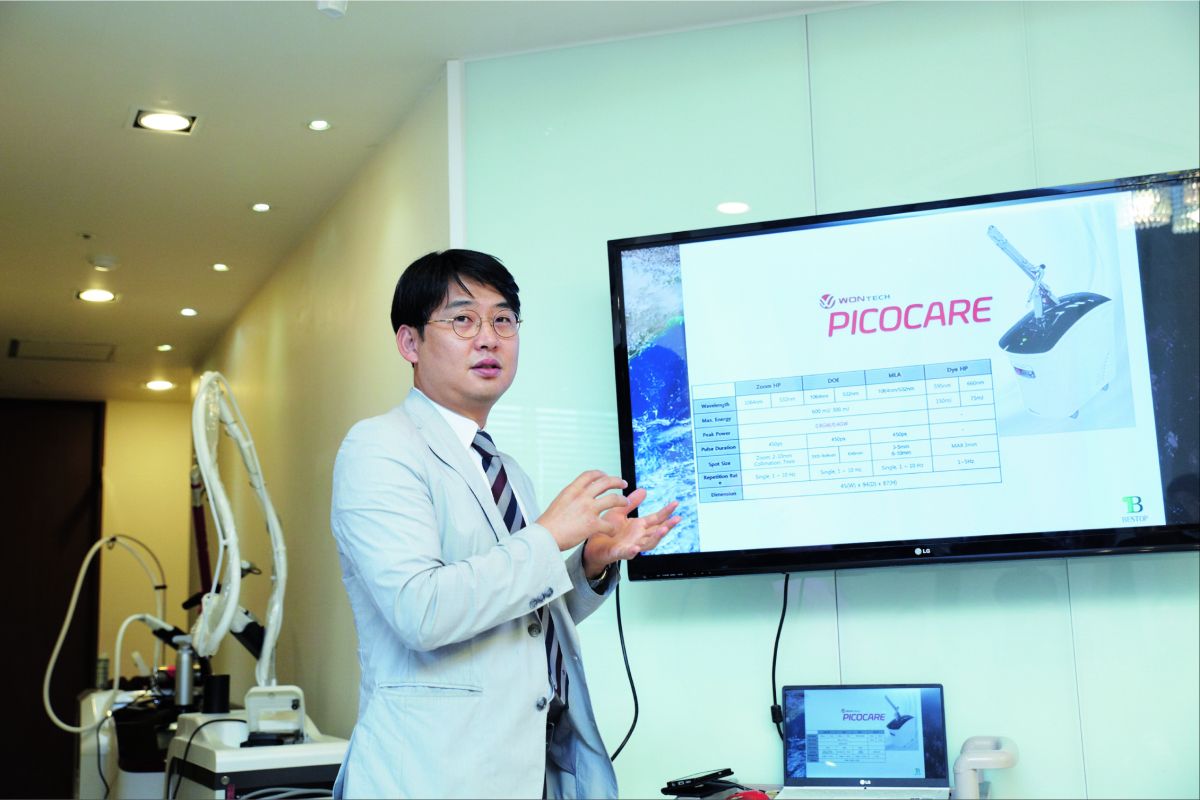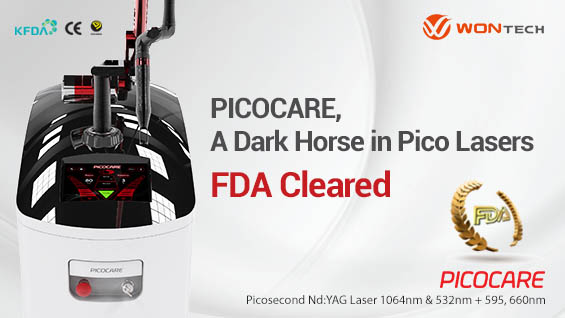Picosecond Laser(PICOCARE) Treatment of Acne Scar and Melasma
“If you are confident about avoiding the dermo-epidermal junction, you can use high energy levels with picosecond Laser without worrying about the risk of complications. I chose PICOCARE after being convinced of its safety by examining the histological results.”
On October 15th, the First Live Workshop by Korean Aesthetic Surgery and Laser Society was held at Clinic Miso in Daegu for seven hours. Korean Aesthetic Surgery and Laser Society plans to deliver important lectures on latest developments in the field of minimally invasive plastic surgery and aesthetic Laser throughout Korea. This event was the first of this initiative and was attended by about 20 medical specialists. Among the many talks given that day, we provided the summary of the talk given by Dr. Lee Minho of Bestop Clinic.
Summary/ Oh Jehyun Photography/Won Sanghee

Personally, I believe the picosecond Laser will become the standard of dermatologic Laser in the near future but I see that others are hesitant to get on the picosecond Laser bandwagon. I hope, in this talk, those who are still skeptical can gain useful information on whether this Laser indeed offers new benefits.
Important Consideration for Laser Selection
The Laser that is most widely used for tattoo and pigment removal is the Q-switched nanosecond Laser. However, it is hard to find the answer to the question which Laser can simultaneously tackle pigmented lesions, acne scar and resurfacing. I believe the picosecond Laser offers a new option for tackling all three indications.
We need to consider the peak energy when selecting a Laser device. This is similar to checking the displacement volume when shopping for a car. I am currently using Wontech’s PICOCARE with 600mJ. In an aggressive scar removal procedure, you may feel a drastic drop in energy after 1500 to 2000 shots using the MLA(micro lens array) handpiece. Especially, if your Laser has an output below 600mJ, you may be hindered from carrying out the treatment. Another thing we need to check is the optic element(lens). The lens often cannot withstand very powerful output. We need to examine whether the device offers excellent durability and what kind of maintenance services are offered by the manufacturer.
Tissue reaction to power density
Tissue Interaction
Before starting to use Laser devices, it is important to first understand joule(J) and watt(W). In simple terms, watt refers to the amount of energy irradiated per unit time(second) and the total amount of energy output is expressed as joule. If we were to compare energy to throwing balls, 10J means 10 balls were thrown in total, regardless of whether they were thrown in a day or in an hour. On the other hand, we use watt to talk about how many balls were thrown per unit time, such as minute or second. The power density is different when 100 balls are thrown over nanoseconds or picoseconds. If 1J is irradiated in nanoseconds, photo-ablation and photothermolysis occur. However, when 1J is irradiated in picoseconds, which is much shorter than nanoseconds, photo-disruption, and photodisintegration follow. I think the key difference between nanosecond and picosecond Lasers is that they induce different tissue reaction due to different power density.
Photo-ablation brings positive thermal effects, whereas, photo-disruption generates shock waves by the action of tissue expansion and induces mechanical destruction of the lesion. These two mechanisms also differ greatly in terms of pain and complications. Picosecond Laser has minimal thermal effect and has little heat sensation and pain. This is an important aspect to understand before we can delve further into the key advantages of picosecond Laser.
[Advertisement] PICOCARE - Manufacturer: WONTECH(www.wtlaser.com)
Picosecond Laser toning causes no pain and patients often do not express any discomfort. Therefore, it is important for the doctor to keep track of the number of shots. This is different from traditional Laser toning where patients often complain of pain. This is because the two Lasers cause different tissue interaction.
-To be continued




















